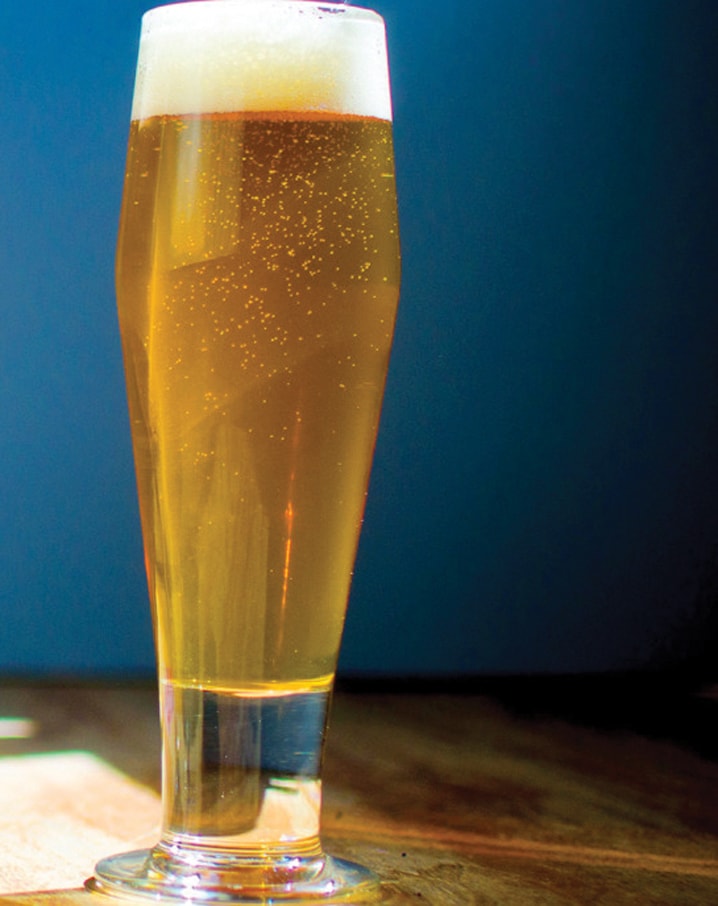“Doesn’t anybody like the taste of beer anymore?”
A friend registered that complaint at a beer festival after sampling too many brews flavored with fruits, spices and the residue of used whiskey barrels.
I can sympathize: My personal log for 2013 includes beers brewed with such unlikely adjuncts as marshmallow, ghost pepper, yuzu and curry powder.
Have we become too jaded to enjoy a beer made from the four basic ingredients: barley malt, hops, yeast and water? If just plain beer is what you seek, you can’t get just-plainer than a helles lager.
Helles (pronounced “HELL-us”) is the immensely quaffable golden lager downed by the tanker truckful in Bavarian beer halls. Stylistically, it’s a cousin to Pilsener.
When the first pils appeared in 1842, its flaxen color and creamy white foam made it an instant sensation. By the 1890s, the new style was drawing enough market share from Central Europe’s murky brown lagers that even arch-conservative Munich brewers were forced to come up with their own version.
Adapting the recipe to local tastes, they produced a lager that was the same brilliant gold but emphasized malt rather than hops. Munich’s Spaten brewery is credited with brewing the first true helles in 1894.
A well-made helles is subtle but not boring. It should have that appetizing aroma of biscuits rising in the oven and a flowery/spicy hop finish that’s subdued but clearly detectable. Brisk in carbonation, with a moderate alcohol level between 4.5 and 5.5 percent by volume, helles has a quality that the late beer writer Michael Jackson termed “more-ish”: One swallow invites another.
Lighter beers don’t always hold up well on transoceanic voyages, and a fine German helles won’t taste the same when sipped from a green bottle stateside as when downed under a tent at the Oktoberfest.
Fortunately, some of Munich’s most famous beer halls now have American outposts. You can get a freshly brewed helles, made to German specifications, at a Hofbrauhaus clone in Pittsburgh or the newly opened Paulaner Brauhaus in New York City’s Bowery neighborhood.
Helles isn’t a popular style for American craft breweries, both because of the long maturation time it requires (six weeks or longer) and because it leaves no room for error: Off-flavors stand out all too clearly against such a delicate backdrop. But it isn’t as rare as it might seem. Sometimes it goes under such noms de plume as “golden lager,” “blond lager” or simply “lager.”
Fordham Helles, for instance, was temporarily pulled from the market for a rebranding. Look for it to return as Gypsy Lager. The recipe remains the same, with Munich and Vienna specialty malts adding an elegant, almost vanilla-like sweetness.
The word “helles,” incidentally, has no connection to the underworld. It’s simply a form of the German word for “bright.”
That hasn’t stopped some American brewers from making sinister puns. Cigar City Brewing in Tampa, for instance, does a version called Hotter Than Helles Lager. And Monocacy Brewing in Frederick, Md., has teamed with D.C. taphouse Meridian Pint to make Long Road to Helles, brewed with precisely 666 pounds of grain per 15-barrel batch, according to the brewery’s marketing and sales manager Jim Bauckman. Most of that is standard Pilsener malt, but the formula, hashed out by Monocacy brew master Tom Flores and Meridian Pint’s Sam Fitz and Tim Prendergast, also includes a non-traditional ingredient not allowed under Germany’s purity law: a pinch of unmalted barley, added to beef up the body without kicking up the alcohol.
“Over the last year or so, Sam and I have become less enamored with over-the-top styles of beer that seem to be a dime a dozen these days,” says Prendergast, Meridian Pint’s cellarman.
“Being hit over the head with bitterness, alcohol and flavor is frankly getting old. What really impresses us are the beers that are low alcohol, quaffable, and yet still seem to pack just as much complexity into a far more subtle package.”
---
The line between helles and Pilsener can get a bit blurry. Hoppin’ Helles, a recent line extension from Jacob Leinenkugel Brewing in Wisconsin, substitutes more aggressive American hop varieties (including Citra and Simcoe) for the subtler European “noble” hop varieties. It has a light, citrusy character with grassy notes.
Despite its name, Dogfish Head Craft Brewery’s new winter seasonal, Piercing Pils, slouches in the direction of helles, striking a fine balance between the crackery malt and herbal hops. The addition of pear juice and pear tea lends extra sweetness without a lot of fruitiness. We’re back, it seems, to the American approach of throwing in the kitchen sink. But hidebound traditionalism is just as bad as reckless abandon. There’s room for experimentation even in a classic style.
